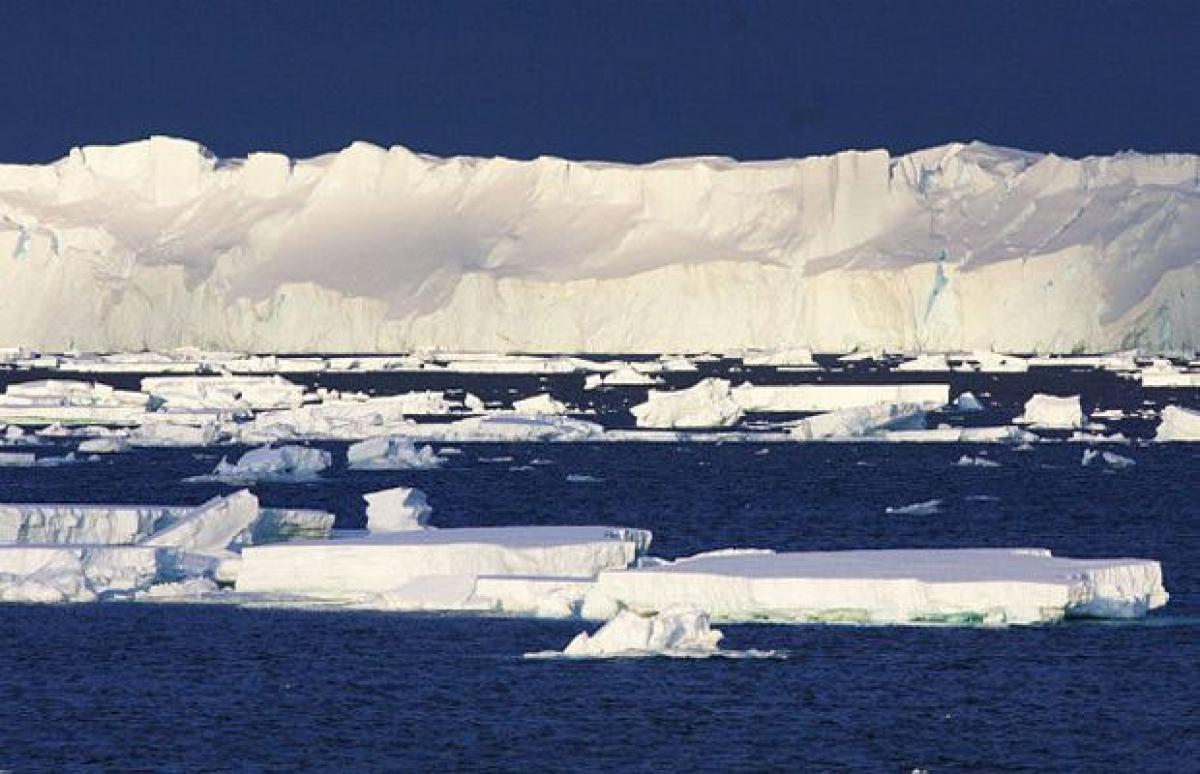Live
- Grand Celebration of MB Church Women’s Revival Conference The women of the MB Church
- Vemulawada Temple Development: Does the TG Endowments Minister want to write her own Agama Shastras for temples?
- Coop banks play key role in economic development
- TTD EO visits Sringeri Sarada Peetham
- Automobile loading using NMG rakes commences
- 555th Prakash Purab celebrated with gaiety
- Good news for Atmakur farmers
- High-risk aortic valve replacement surgery performed successfully
- HMWSSB MD holds review meeting on OTS-2024 scheme
- Dhobi Ghat assessed for potential to host sports complex
Just In

x
Highlights
Glaciers all over the world are melting at an alarming rate, with the first decade of the current century seeing up to thrice the rates of the 20th century, a new global study has warned.
Glaciers all over the world are melting at an alarming rate, with the first decade of the current century seeing up to thrice the rates of the 20th century, a new global study has warned.
The World Glacier Monitoring Service, domiciled at the University of Zurich, has compiled worldwide data on glacier changes for more than 120 years.
In this study, observations of the first decade of the 21st century (2001-2010) were compared to all available earlier data from in-situ, air-borne, and satellite-borne observations as well as to reconstructions from pictorial and written sources.
"The observed glaciers currently lose between half a metre and one metre of its ice thickness every year - this is two to three times more than the corresponding average of the 20th century," said Michael Zemp, Director of the World Glacier Monitoring Service and lead author of the study.

"Exact measurements of this ice loss are reported from a few hundred glaciers only. However, these results are qualitatively confirmed from field and satellite-based observations for tens of thousands of glaciers around the world," said Zemp.
According to the international team, the current rate of glacier melt is without precedence at global scale, at least for the time period observed and probably also for recorded history, as indicated also in reconstructions from written and illustrated documents.
In addition, the study shows that the long-term retreat of glacier tongues is a global phenomenon. Intermittent re-advance periods at regional and decadal scales are normally restricted to a subsample of glaciers and have not come close to achieving the Little Ice Age maximum positions reached between the 16th and 19th century.
As such, glacier tongues in Norway have retreated by some kilometres from its maximum extents in the 19th century.
The intermittent re-advances of the 1990s were restricted to glaciers in the coastal area and to a few hundred metres. In addition, the study indicates that the intense ice loss of the past two decades has resulted in a strong imbalance of glaciers in many regions of the world.
"These glaciers will suffer further ice loss, even if climate remains stable," said Zemp.
Together with its National Correspondents in more than 30 countries, the international service published the comprehensive analysis of global glacier changes in the Journal of Glaciology.

Next Story
More Stories
ADVERTISEMENT
© 2024 Hyderabad Media House Limited/The Hans India. All rights reserved. Powered by hocalwire.com







